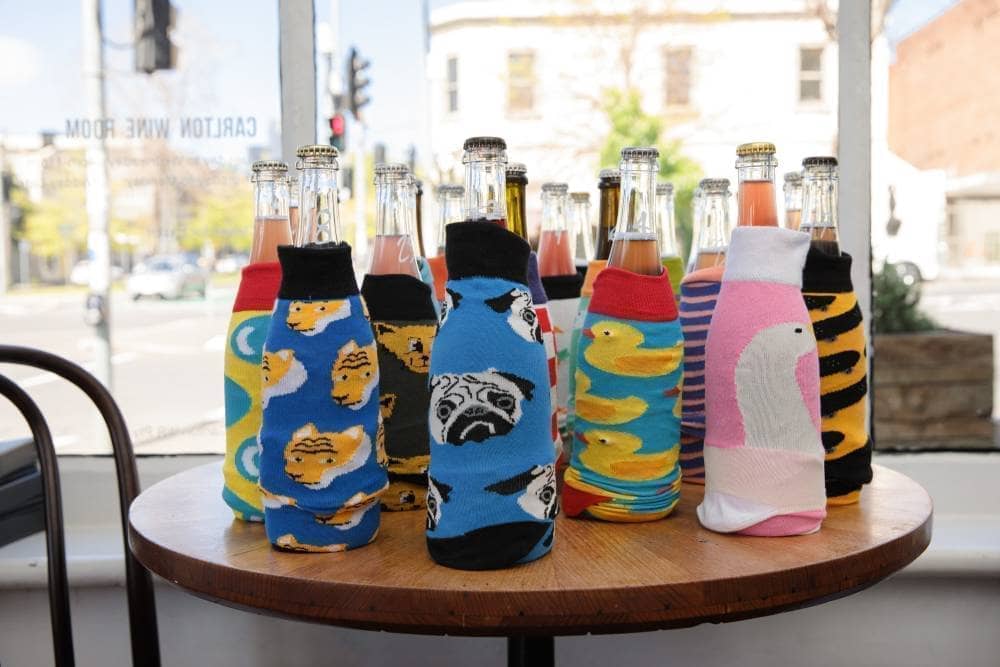While it couldn’t feel any more removed from city life, the McLaren Vale wine region is actually inside Adelaide’s metropolitan area. And although the township itself is only 40 minutes by car from central Adelaide and vineyards brush up against ever-encroaching housing, McLaren Vale remains unaffected by the urban sprawl. With deeply etched history, the Vale has a slow-paced sense of calm and an extraordinary wealth of untrammelled beauty. It is home to some of this country’s most beautifully pristine beaches, as well as some of the world’s most forward-thinking grape-growers and winemakers. And with over 80 cellar doors, it is an essential destination for wine lovers – and anyone else, for that matter.
History
McLaren Vale can lay claim to being South Australia’s first wine-growing region, pipping the Barossa Valley by a few years. And while they were settled at similar times, the Barossa was largely founded by German immigrants, while the pioneers of McLaren Vale were overwhelmingly English, with the cultural echoes strongly felt to this day.
Thomas Hardy and John Reynell planted the first vines in the new colony, putting down roots in 1838 and 1839 respectively. Both men had sustained success, with Hardy becoming the region’s most significant vineyard holder and wine producer in the latter half of the 19th century, and eventually acquiring Reynell’s vineyards, too. Many of the original plantings actually spread into what is now suburban Adelaide, with much vineyard land lost to housing over the years, though with a declining industry in the early 20th century, housing was a much more lucrative market than grape growing.
Mirroring much of the Australian wine industry, McLaren Vale was initially supported by an export market that favoured somewhat rustic dry table wines, with a significant shift towards fortified wines in the early 20th century pushing many growers to adapt or go out of business. Unlike regions like the Yarra Valley, whose cool climate grapes were largely unsuitable for making Port and Sherry substitutes, McLaren Vale had the advantage of ripe, sun-kissed grapes that could be fashioned into the popular wines of the day. That period, leading up to the resurgence in the 60s and 70s, saw a general decline in table wine production, with much juice blended away with grapes from other regions.
Like much of Australia, post-war immigration, starting from the late 40s, saw Italian immigrants imprint their culture on the Vale, introducing olives as major crops for both the table and olive oil production, as well as reframing attitudes to wine production and consumption. It was around this time that prominent McLaren Vale makers started to push back into the table wine market. Kay Brothers bravely established a cellar door in 1956, though purchases were four flagons at a minimum, as dictated by law.
Building on the foundation laid by those early tendrils of a renaissance, the late Greg Trott rebuilt the ruin of the Wirra Wirra winery (two walls and a slate fermenter was all that remained), thus landing one of the most significant counterpunches to arrest the decline of the Vale and help send it on an ever-upward trajectory. Wirra Wirra was originally founded by Robert Strangways Wigley in 1894, and the connection between one purported eccentric and a readily verifiable one in Trott (see below) was established when the latter brought the estate vividly back into play in 1969.
Trott, along with other modern pioneers, like the Lloyd’s of Coriole, championed the distinctiveness of the region and its wines, relegating homogenisation to the bin of history. Since then, McLaren Vale has had its fair share of champions, even if it still seems to sit somewhat in the shadow of the Barossa.
The truth is that the Vale has its own distinct personality, with the Mediterranean climate favouring both the long-established varieties – shiraz, grenache, cabernet – and representing vast potential for those less tested – nero d’avola, fiano, sagrantino. Indeed, the championing of so-called alternative varieties has solid history in Mclaren Vale, with Mark Lloyd (Coriole) largely, if not solely, responsible for the popularisation of sangiovese in this country. One of McLaren Vale’s other significant assets is a wealth of old-vine material, with the region never succumbing to the vine louse phylloxera.
Today, McLaren Vale has also become a leader in organic viticulture, with the highest number of certified organic and biodynamic vineyards of any Australian region. The Paxton vineyard was converted to biodynamic viticulture some time ago, with certification coming in 2011, and that’s over nearly 100 hectares. The slightly larger Yangarra is similarly certified, as is d’Arenberg and Wirra Wirra, along with a legion of smaller growers, helping to make McLaren Vale Australia’s benchmark region for organic and biodynamic viticulture.
Makers like Steve Pannell (Pannell Enoteca), Toby Bekkers (Bekkers) and Pete Fraser (Yangarra) are pushing the boundaries of the Vale, combining innovative organic farming and their intimate experience of the great wines of the world to propel the region to greater heights. They are joined by generational Vale makers who are recasting the future of their properties, like Corinna Wright (Oliver’s Taranga), Chester Osborn (d’Arenberg) and Duncan and Peter Lloyd (Coriole), as well as a new wave that are capturing the territory through their own unique lenses: Rob Mack (Aphelion), Brad Hickey (Brash Higgins), Andy Coppard (Lino Ramble)… The history is deep, and the future is ever so bright.


